#Gale 1890
Text

In the spring of 1890 Eugene and Alice Gale arrived at their newly inherited farmhouse. Eugene’s late uncle had left in his will that at the age of 25 his nephew would, if he so wished, be allowed to take over the modest little farm located some 20 minutes outside of Henford.
The couple had met when Alice started working as a maid for the same family that Eugene was a stable boy for. The ever joking Alice had immediately caught Eugene’s attention and the two were married not long there after.
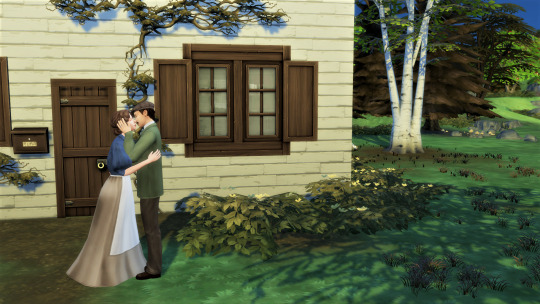

As the time of Eugene’s 25th birthday grew closer, the promise of their very own farm where they’d be their own masters gave them the courage they needed to leave their employment.
Now, the time had finally come and a bright future laid ahead.
Writer´s note: The lot is an edited version of Fableman Farm by @aheathen-conceivably, all credit and tons of thanks to them!
#Gale Legacy#Gale gen 1#Gale 1890#Eugene Gale#Alice Gale#the sims 4#ts4#ts4 legacy#ts4 historical#ts4 decades challenge#decades challange#historical sims
65 notes
·
View notes
Text



The Ferret
The Ferret is one of my favorite second hand booksellers. This is a small branch of the original Ferret established in 1979 in Wellington city, the capital of New Zealand.
The Ferret has a good selection of books on photography. Not the technical sort but artist's monographs, which I collect.
I bought two books by the Italian photographer Luigi Ghirri - Cardboard Landscapes and Thought Landscape. I also purchased a book of essays by the English/New Zealand critic and photographer Peter Turner and a survey of the work of Tracey Moffatt, an Australian photographer of First Nation descent.
You may notice I mention each photographer's cultural heritage. We carry cultural memory deep inside us, and so many generations of that inheritance. It's meaningful to me personally and informs my understanding of others. The French blood of my farming ancestors called me to the countryside, my Scottish blood makes me a capable stone wall builder and adept at the swing of an axe.
It's relevant to say that the poet Allen Curnow, who in 1941 wrote the poem Wild Iron, was a New Zealander. He reveals his cultural identity, to me at least, in his sparse use of language and in writing about nature. It was lovely to see the poem hanging on the wall of the Ferret. I was very taken by it. The iron he writes about is corrugated iron, a ubiquitous building material in colonial New Zealand. The roof of my barn is clad with Belgium "iron", imported by settlers in the early 1890's.
But the poem is not about "iron", it's about the weather. The Southern gales were once 5 to 7 days long when I was growing up here. Straight from Antarctica, a hail of horizontal ice and rain. Wellington city once had ropes on strategic street corners to which pedestrians would have to cling to stay on their feet. That weather has gone, to be replaced by sudden and dramatic weather events that take lives.
A few nights ago I was woken by the sound of the lemon tree outside my bedroom window hitting the side of the house, its leafed branches scratching at my window panes. For one hour the Southern gale blew then died away. It is becoming a memory, like so much that we have and are about to lose.
I was young when I planted that tree more than 35 years ago.
I am still here. Don't worry. I will take care of you.
One Kindred Spirit
#original photography#original writing#climate change#photographers on tumblr#bookstores#architecture
162 notes
·
View notes
Text
Bloodweave Fic Recs (01/21/24)
[banging ladle against pot] Come get y'alls soup!
Previous fic recs here, here, and here!
||
skin deep by howeverlong (G, 800+ w || Hurt/Comfort, bonding over covering up scars) Astarion pouts. “Why, Gale,” he simpers. “You're normally so accommodating. What if I actually came to ask you something?” / Gale gathers himself together. “Well. What can I help you with, then?” / “Oh, I didn't,” says Astarion. “But what if I had?”
Some Culinary Advice by Asidian (G, 1k+ w || Pre-Relationship, Cooking, Fluff) The air smells fresh and vibrant, resplendent with the scent of growing things, and wood smoke, and – Gale pauses in his reverie. Sniffs at the air, delicately. Burning soup. It smells quite a lot like burning soup.
At Arm’s Length by varsicles (T, 1k+ w || Pre-Relationship, Canon Typical Violence) Astarion is a puzzle that Gale is determined to unlock. It’s unfortunate that one of the keys is his own grievous bodily injury.
All-Consuming by bloodweaving (shipwreckblue) (T, 2k+ w || Pre-Relationship, Chronic Pain) He can’t really call it hunger, is the thing. What the Netherese Orb does to him is something entirely different.
Ante Up by LuckofTymora (FelixFelicis) (M, 1k+ w || Established Relationship, Non-Explicit Sex, Fluff) The lads get up to a bit of gambling at Elfsong Tavern and turn it into a competition. Neither one particularly likes to lose. Pillow fighting ensues. Also they are in love.
The Inconstant Moon by FridayMorning (M, 4k+ w || Hurt/Comfort, Developing Relationship, Angst with a Happy Ending, Post-Canon) “You’re going away. Someplace I can’t follow.” / Astarion blinks. Remembers the body beneath him. Feels the palm cupping his cheek. They had not even gotten to the good part. They had not gotten to the good part again since reaching it on Astarion’s grave. How many moons ago was that?
Sigils by Cowboyselkie (M, 8k+ w WIP || Alternate Universe - Historical, 1890s, Angst, Gothic Horror) “My previous clientele are usually more particular in what it is they want protection from, you see.” / “I do,” said Astarion, his voice trailing thin. He was quiet for a moment. “Vampires.” / “Pardon?” / “That’s what I seek protection from,” he said, more clearly. “I want my home to be safe from vampires.”
Deo volente by cyranonic (M, 9k+ w WIP || Post-Canon, Angst, Slow Burn, Implied/Referenced Torture) The villains are defeated. The heroes claim their victory. Astarion sinks down to exactly where he started. Gale plots his apotheosis. Somehow, they meet in the middle.
Missing Piece by thealphaaxolotl (M, 10k+ w || Hurt/Comfort, Angst with a Happy Ending, Implied/Referenced Torture) Astarion was moving before Tav could respond. In a second, he was across the room, pinning Gale to the wall with a knife to his throat. “What,” he said, lips curling into a snarl. “Have you done with him?” / Or, Astarion doesn't realize he has feelings for Gale until the wizard is taken by Orin.
The Season by Linnetagain (M, 59k+ w WIP || Alternate Universe - Modern Setting, Dancing on Ice AU, Ice Skating, Slow Burn, Enemies to Lovers) In which Astarion is an ex-olympic figure skater and Gale is a famous musician. They get paired together as Dancing on Ice's first ever same sex couple. Shenanigans ensue.
Untouched And I Want You So Much by Lunarwench (E, 2k+ w || Body Worship, Control Issues, Predetermined Boundaries) This is about Astarion being in control. Not so much being in control of Gale, but being in control of what happens to his own body. In control of how and when his body is consumed, if he allows it at all. After so long with no bodily autonomy, no say in how he was used, no say in his pleasure or pain, sometimes Astarion needs to remind himself that the only person in control of his body now is himself. Or; Astarion works through some issues, Gale is there to help.
a delicacy of undeath by shroomonabroom (E, 3k+ w || Ritual Cannibalism, Angst, Dead Dove) Gale finds an alternative cure to vampirism: a spawn needs to kill and then consume their Master’s heart.
squirm by TheEarlGreyAlpha (E, 3k+ w || PWP, Inappropriate Use of Evard's Black Tentacles) “Well, good to know.” He held out an expectant hand, and waited for Gale to return the amulet to him. But when the wizard finally stopped his preening and noticed, he was clearly in no rush to hand it back.
Beg by Salazar101 (E, 4k+ w || Boot Worship, Hair-pulling, Begging) Astarion has what Gale needs to stabilize his orb. He just wants him to beg for it, is that too much to ask?
47 notes
·
View notes
Text
I got curious about how 19th century newspapers actually reported on storms and shipwrecks. Here's an example from the Teesdale Mercury, 29th January 1890:
RESCUED IN MID-OCEAN
The liner Gallia brings particulars of the rescue of 18 mariners in the North Atlantic by Captain Munro, of the British steamship Stag, on the 29th ult [?], while on a voyage from Shields to New York. The sinking ship was the old American clipper-built ship Shakespeare, and the crew had already been left to their fate by one passenger steamer, and had abandoned all hope. Captain Munro in his account says the wind was blowing at hurricane force, and his ship was making its way through big seas when the wreck was seen through a veil of hail and rain. He made for the vessel, and found it was a dismasted ship, wit h the crew waving and shouting in a frenzy of despair. He continues: " At that time it was blowing a frightful hurricane, and a boat could not have lived a moment in the seas. Shortly after a heavy snow squall shut out the fast-sinking ship, and all that day and night the vessel was obscured, but every once in a while we could see the flash of lights and rockets telling us where they were. All that night we sailed about the ship, hoping that the storm would abate sufficiently to allow us to go to the crew's succour. For hours we could not see their distress signals, and it gave me intense anxiety for fear I would lose them. When morning dawned I again made a search for the ship. After hours of fruitless endeavour the snow squall suddenly ceased, the mist cleared away, and disclosed the ship to our view. She was almost level wit h the water. The sea was still frightfully high, but I knew that the crew's safety depended upon m y promptness. I ordered away the port quarter boat and called for volunteers to man it . Every one of my crew to a man instantly responded. Second-officer Noell and four of my
ablest seamen manned the first boat and rowed to the rescue. On account of the heavy sea the boat could not get within 50ft. of the sinking ship. Then those on the ship threw my men a line. I shouted to everyone to put a lifebelt on and jump into the sea, and then, with the aid of the rope, pull themselves through. Owing to the sea my lifeboat could only rescue five men the first time, and it made four successive trips, each of the men having first to jump into the sea, and then, with the aid of the line which was attached to the ship, swim towards the lifeboat. On the two last trips a fresh crew of volunteers, in charge of First-officer William Hanson, went to the wreck. Chief-officer Fred Matte, the last person to leave the sinking vessel, could not hold on to the rope, his hands being so sore and blistered from exposure and cold, and had to swim the whole distance, my men dragging him out of the water benumbed and exhausted. The rescue, although attended with the gravest difficulty, was successfully accomplished, and the conduct of my men and the presence of mind displayed by the Shakespeare's crew are deserving of the highest praise. We abandoned the ship and the late captain's pet dog to the mercy of the elements, and continued on our trip . The rescued men were weak and exhausted from fatigue and exposure, and were one mass of bruises and sores. They had been tossing about the Atlantic for nearly three months, having left Hamburg on Oct. 24. Their ship was dismasted in a gale on Dec. 17, in which she also sprang a leak. For four days and nights, amid frightful hurricanes, the big seas constantly sweeping over them, the brave crew manfully worked at the pumps in a hopeless endeavour to keep their ship afloat. Capt. Mullar died from heart disease on Dec. 16, and just as a big sea swept his ship on the following day, hurling the mizenmast wit h part of the mainmast to the deck, his body was buried in the sea."
Who knew that one of the areas where Bram Stoker allowed himself creative licence was the inclusion of paragraph breaks?
89 notes
·
View notes
Text

On January 21st 1890 the Forth Bridge was first tested when two 1,000ft long test trains, each comprising a locomotive and 50 wagons, and each weighing 900 tons, rolled onto the newly-built Forth Bridge side by side from the south.
The Forth Bridge was, and indeed, is, an engineering marvel when it opened, and it still carries up to 200 trains a day, a remarkable feat for a bridge over 130 years old!
Ferries had crossed the Firth of Forth to link Edinburgh to the north of Scotland since at least the 12th century. Engineers proposed bridges as early as 1818, and work finally began on a design by Thomas Bouch in the 1870s. That project stopped abruptly after Bouch's Firth of Tay suspension bridge blew down in a gale in 1879 while carrying a passenger train, killing 75 people.
John Fowler and Benjamin Baker submitted a design in 1881 for a cantilever bridge made of modern steel to carry rails across the Forth. Factories were built on site to cut and shape the steel, and a new town housed 4,000 workers.
Three 330-foot towers went up, each atop four separate foundations. The towers cantilevered out toward one another, not quite touching. Machinery hoisted two 350-foot truss spans into place to be supported by the ends of the cantilever arms. Result: two clear spans of 1,710 feet each and a total length of 5,350 feet, not counting the approaches.
The muscular design, with its massive cross-bracing and 58,000 tons of steel, was hailed as a triumph of Victorian engineering on its completion in 1890. Fowler's knighthood was upgraded to a baronetcy, and both Baker and head contractor William Arrol received knighthoods of their own.
But the Forth Bridge was also criticized as expensive (3.2 million pounds, or almost 400 million pound in today's money) and "unnecessarily" strong. One such critic would live to regret his words. Theodore Cooper's design for the Quebec Bridge over Canada's St. Lawrence River used much lighter structural members. It collapsed while under construction in 1907, sending 19,000 tons of steel into the river and killing 82 construction workers.
The Forth Bridge still has the world's second-longest cantilever spans, and trains still run over it every day. It has been called the Forth Rail Bridge after completion of the Forth Road Bridge in 1964.
The Forth Bridge was inscribed as a World Heritage Site by United Nations body UNESCO in July 2015 at its meeting in Bonn, Germany. It becomes Scotland's sixth World Heritage Site and now enjoys the same status as the Taj Mahal and the Great Wall of China.
#scotland#scottish#forth bridge#rail bridge#firth of forth#north queensferry#south queensferry#history
21 notes
·
View notes
Text
hey yall
nobody asked for this, but to show off how IN DEPTH ive taken bo’s story, here is his family tree (five generations, dates back to late 1890)
why five generations? needed all five to show the connect between bo and his distant cousins, lux and nadia

for your info, jazkub’s mom also came from a magical bloodline, but a p generic type of magic.
some of their portraits vary in age bcz god damn i am not drawing like 40 old ppl
rose died from sacrificial occult purposes, amelia died in battle, and oliver and marie-anne died in a house fire
ophelia’s grandma, joan, is not listed because joan is on the non-barabell side of her family (father’s side)
denny and lux are half siblings
jazkub and bo are half siblings
bo does not know who derek is. derek is quite literally the mastermind behind ruining another one of my oc’s lives.
how flourished and intricate these background characters are, wowie!
geralt is a barabell, gale is a barabell thru marriage.
wowoeieiwoewooo
11 notes
·
View notes
Text

Título: Bahía de Mosman
1889
Artista: John Mather (Escocia, Australia, 1848-18 de febrero de 1916)
Detalles
Lugar donde se realizó el trabajo: Mosman → Sídney → Nueva Gales del Sur → Australia
Fecha: 1889
Categoría de medios: Acuarela
Materiales usados: lápiz, acuarela, gouache blanco
Dimensiones: mira de 39,0 x 54,0 cm; Marco de 68,0 x 80,2 cm.
Fecha de firma: Firmado y fechado en toda la esquina, acuarela marrón "J. Mather 10.89".
Crédito: Comprado en 1890
Información e imagen de la web de la Art Gallery NSW.
1 note
·
View note
Text
Ethel Anna Stephens (1866-1944) pintora, grabadora y artista decorativa australiana.

Nació en Sydney, Nueva Gales del Sur, Australia.
Hija de William Stephens, director de la Sydney Grammar School y más tarde profesor de Historia Natural en la Universidad de Sydney, y Anna Louise, de soltera Daniell.
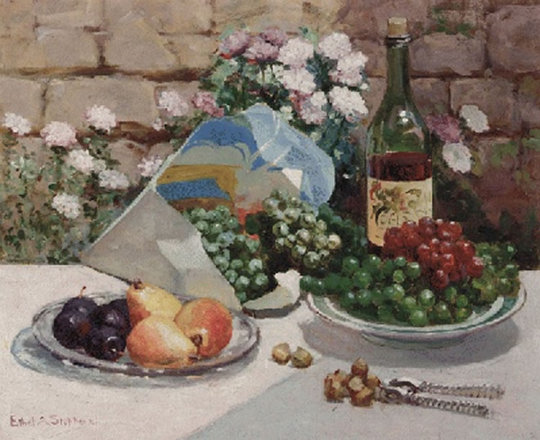
Ethel comenzó a exponer en la Real Sociedad de Arte de Nueva Gales del Sur en 1883. Cuando era estudiante de veinte años, siete de sus dibujos se incluyeron entre los "trabajos de clases privadas celebradas en las salas del Sydney Technical College" en la Exposición Colonial e India de 1886, Londres.

El mismo año se convirtió en la primera alumna de Julian Ashton. Trabajando tanto al óleo como a la acuarela, pintó flores y otros bodegones, retratos y paisajes. En 1888 expuso "algunas flores de acuarela" en la sección de aficionados de la sección de Bellas Artes de la Exposición de Industrias de Mujeres en Sydney.

En 1890 ganó dos premios estudiantiles (primero y segundo) por sus estudios de tamaño natural de cabezas expuestas en la Galería de Arte de Nueva Gales del Sur, nuevamente catalogadas como "amateur".
Dos años más tarde (1892), fue la primera mujer elegida para el Consejo de la Sociedad de Arte de Nueva Gales del Sur y luego fue reelegida para el nuevo Consejo en 1894. Ese año se convirtió en miembro fundador de la Sociedad de Artistas y también expuso con ellos. (su trabajo se incluyó en la Exposición de la Commonwealth de 1901).

La membresía de este grupo disidente de la Sociedad de Arte estaba restringida a pintores profesionales, por lo que su estatus había cambiado claramente. De hecho, en 1897 era la única mujer entre los ocho miembros de su comité. Entre 1894 y 1913 también expuso regularmente en la Sociedad de Arte de Queensland. Aun así, su género y sus temas, en particular la pintura de flores, tendieron a marginarla en las exposiciones de la sociedad artística y comenzó a promover exposiciones exclusivamente femeninas, comenzando con 'Five Lady Artists' (que ella instituyó) en la Bradley's Art Gallery de Sydney en 1905.

Los otros expositores fueron su prima Alice Norton, Emily Meston y Aline y Edith Cusack, todas ellas para convertirse en miembros inaugurales de la Sociedad de Mujeres Pintoras de Sydney (fundada en 1910).
Siguió siendo miembro activo de la Sociedad de Mujeres Pintoras (incluso como presidenta y en sus comités de selección) hasta 1934, cuando se convirtió en la Sociedad de Mujeres de Artes Industriales, más comercial, y ella renunció.

Fue una de las primeras miembro de la Sociedad de Artes y Oficios de Nueva Gales del Sur (fundada en 1906), pero mandona, pretenciosa y condescendiente, convencida de que las artesanías eran para mujeres menores que "incursionan en acuarelas y óleos que no tienen". "Sin tener la más remota idea de pintar", podían convertirse en miembros útiles de la sociedad, ya que un oficio "es mucho más fácil de aprender".

Después de la muerte de su padre en 1891, comenzó a recibir alumnos; impartió clases de pintura en su estudio al menos desde 1900.
Su obra se vendió bien y en la década de 1920 pudo construir una casa en Vaucluse con estudio y realizar varios viajes al extranjero. Viajó a Londres y París en 1920-23, estudió en La Grande Chaumière y expuso en el Antiguo Salón (1920-21).
Regularmente daba charlas sobre arte propio y ajeno, sobre exposiciones y sobre sus experiencias como estudiante de arte, generalmente destacando la importancia de la tradición, como era de esperarse de su formación y trayectoria.
En contraste con la entusiasta recepción que tuvieron sus pinturas de flores, los competentes retratos académicos de Stephens fueron generalmente recibidos con frialdad. Difícilmente se podían ignorar los grandes encargos de retratos oficiales, pero sus flores tenían un atractivo fácil como símbolos elegantes y apropiados del "trabajo de las mujeres". Sin embargo, sus primeros éxitos fueron con los retratos.
Tanto su primer como su segundo premio en el concurso de estudiantes de arte de 1890 en la Galería de Arte de Nueva Gales del Sur fueron retratos, y su ganadora, la "cabeza de una anciana", fue elogiada de mala gana.
La sección de Bellas Artes de Nueva Gales del Sur de la Primera Exposición de Trabajo de Mujeres de 1907 en Melbourne, que dirigió Stephens, incluyó sus propios retratos Fran Reinits y Miss Rhoda Anderson.
En Melbourne, ganó el premio a la mejor pintura floral. Por una vez, el Sydney Mail admitió que en su arte había algo más que sus "muy admiradas" rosas: "desde hace algún tiempo se la conoce como una pintora de retratos vigorosa y fiel, con un talento especial para representar a aquellos a quienes las "nieves" de la edad han tocado.
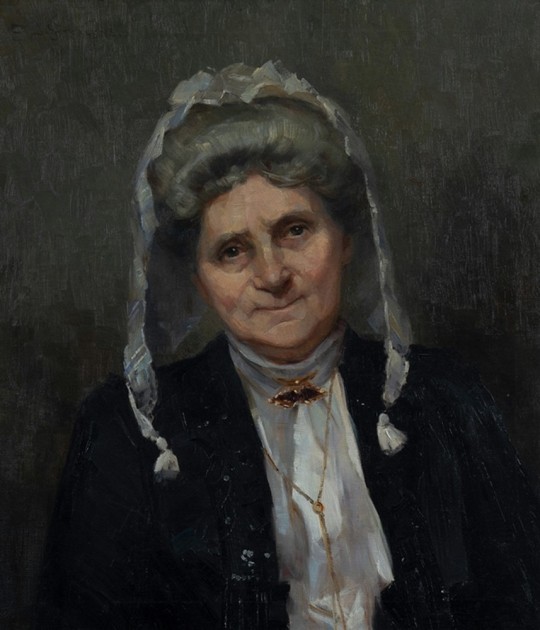
Su retrato de Mary, Lady Windeyer, hermana de Emily Rose Twynam, muestra su "talento especial" en su máxima expresión.
Stephens era amiga íntima del Women's College y mostró su trabajo en su exposición de arte de 1895, pero el retrato era un encargo familiar, y lo legó al colegio en 1961, tanto porque su padre fue el primer presidente del consejo (1891-95) como porque su madre fue una figura clave en la creación del lugar.

Como organizadora de la contribución de Nueva Gales del Sur al Pabellón del Trabajo de las Mujeres en la Feria Mundial de Chicago de 1893, había reprendido al presidente cuando cuestionó la idoneidad de incluir la escultura, afirmando tajantemente que el trabajo de las mujeres iba "más allá del producto de la aguja".
Murió en Nueva Gales del Sur, Australia.
Las obras de Ethel Anna Stephens están representadas en la Galería de Arte de Nueva Gales del Sur y en la Biblioteca Estatal de Nueva Gales del Sur.
1 note
·
View note
Text
𝗖𝗨𝗥𝗜𝗢𝗦𝗜𝗗𝗔𝗗𝗘𝗦 𝗗𝗘 𝗟𝗔 𝗛𝗜𝗦𝗧𝗢𝗥𝗜𝗔
EL SILLÓN DEL AMOR
El "Siège d'Amour", un nombre que promete romance y ternura, en realidad esconde una historia picante y extraordinaria, estrechamente ligada al futuro rey Eduardo VII.
El entonces Príncipe de Gales, más conocido como "Bertie", era famoso por sus escapadas libertinas, especialmente en la ciudad del amor: París.
La sofisticada construcción del Siège d'Amour fue realizada a medida en 1890 por el renombrado pero discreto carpintero Louis Soubrier. Esta "silla del amor" especial fue entregada al burdel Le Chabanais, donde el príncipe la utilizó para sus placeres personales.
El diseño especial de la silla era tan ingenioso que permitía al príncipe divertirse de diversas maneras, incluso con dos damas al mismo tiempo.
Los burdeles fueron legalizados en Francia en 1802, pero no fue hasta 1878 que se abrió un burdel de buena reputación, Le Chabanais.
Este establecimiento fue considerado el más extravagante de su época. A lo largo de los años ha acogido a invitados ilustres como Humphrey Bogart, Mae West, Cary Grant y, por supuesto, el rey Eduardo VII.
Cada habitación estaba lujosamente decorada en un estilo individual, desde la Cámara Turca hasta la Sala Pompeya y el Salón Japonés.
Pero la habitación favorita de Bertie era la habitación hindú.
Si bien la silla original utilizada por Bertie ahora es propiedad del bisnieto del carpintero original del siglo XIX, solo se conocen tres ejemplos hechos a imagen del diseño original.
Otro ejemplo de este sillón del amor único se puede admirar en el Museo del Sexo de Praga.
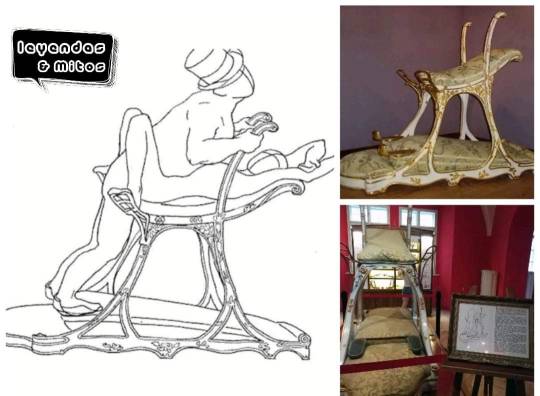
0 notes
Text
1864–1938 Mary Ann Money
3rd great-grandmother
Mary Ann Money was born in on 18 March 1856 to Lucy Gale and Henry James Money in Stratfield Mortimer, Berkshire.
MortimerShinfieldLongbridge HouseKiln CottageGrovelands Road
Children
Males
Leonard C Wickens 1888–?
William Arthur Thomas Wickens 1888–1963
John Albert Wickens 1889–1970
Peaceful Wickens 1890–
Abel Wickens 1898–?
Alec George Wickens 1898–1984
Hubert…

View On WordPress
0 notes
Text

After one of her weekly meetings with the women’s suffrage group, Magdalena stayed behind to show Irene Billingsley one of her manuscripts.
She sat in quiet suspense, watching to older woman read.



“This is brilliant, Ms. Gale,” Irene finally said and sat down next to Magdalena, “you have quite a way with words. You write on a machine, no?”
Magdalena nodded excitedly, “thank you Ms. Billingsley, I do!”
“Very impressive,” Irene said. She seemed to think for a while before clearing her throat, “I have a proposition. Would you like to come work for me, or for us? We’re expanding and need a new secretary. There’s also talk about starting a monthly newsletter, so if you’re interested perhaps you could write columns for that as well.”
Magdalena let out an involuntary squeal, “my goodness, of course! I’d be honoured!”
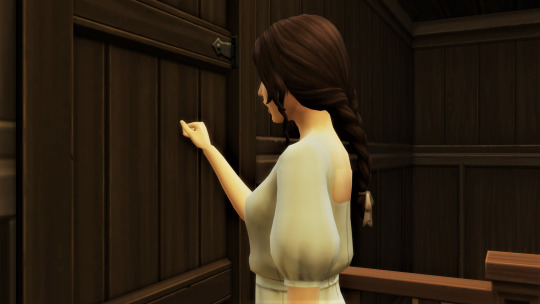

That night, Magdalena stood in front of her parents´ bedroom door, gathering up courage to tell them the news. Finally she knocked and Alice opened the door, "Magda," she smiled, "did you want something?"

"Good evening mama, may I come in?" Magdalena asked, Alice nodded and gestured her daughter inside, "good evening, papa."
"What´s on your mind, dear?" Alice asked and walked over to Eugene.
"Well, I´ve been offered work," Magdalena said slowly, "it would be six days a week, monday to saturday. I´d still have time to help out at home," she swallowed nervously, "I´m going to accept."
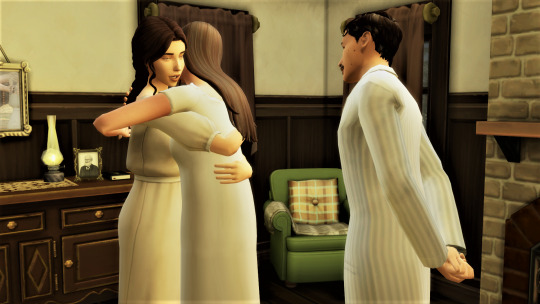
"Why, of course you will!" Eugene exclaimed.
Alice walked over to her daughter and hugged her tight, "congratulations my love. We´re very happy for you."
#Gale leagcy#Gale gen 1#Gale 1890#the sims 4#ts4#ts4 legacy#ts4 historical#ts4 decades challenge#decades challange#historical sims#Magdalena Gale#Alice Gale#Eugene Gale
17 notes
·
View notes
Text
Louisa Cavendish

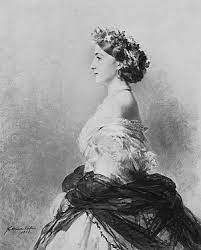
Louisa Frederica Augusta Cavendish, Duchess of Devonshire, formerly Louisa Montagu, Duchess of Manchester, born 15th June 1832, died 15th July 1911. She is German but born in Britain. She was an aristocrat, sometimes referred to as the "Double Duchess".
In 1852, Louise Alten would become Viscountess Mandeville after meeting William Drogo Montagu, heir to the Duke of Manchester at the opera in Nice. In the palace chapel at Hanover, and subsequently at the British embassy, they married. Upon his father's death on 8 August 1855, William became the 7th Duke of Manchester and his Duchess Louisa. Together they had two sons and three daughters and were married till William’s death in 1890.
Conservative party, Duchess Louise was their preferred candidate for the role of Mistress of the Robes to Queen Victoria, which she performed from 24 February 1858 – 11 June 1859. The duration was shortened by the fall of the Tory government at which point the preferred liberal candidate, the Duchess of Sutherland took the role.

Louise was also a fixture at the many house parties attended by the Prince of Wales and his wife Princess Alexandra. Louise was gifted a Faberge box painting by Queen Alexandra in 1908.
Louise was unhappy in her marriage to the Duke of Manchester, he was a serious spender endangering the family fortunes, she performed her duties caring for their homes and raising their children with devotion.
Writer, S. (2023). The Fascinating Life Of Louisa Cavendish-Bentinck. [online] Available at: https://www.salonprivemag.com/the-life-of-louisa-cavendish-bentinck/ [Accessed 9 Aug. 2023].
Lady, Y. (2018). The History of Sir Charles Bentinck, Bart. and Louisa Cavendish. a Novel, in Three Volumes. by the Author of Laura and Augustus. ... of 3; Volume 1. Gale Ecco, Print Editions.
0 notes
Photo

Montague Dawson (1890-1973) - Onward - the ‘Norman Court’
Oil on canvas. 40 x 50 inches, 101.6 x 127 cm.
Estimate: US$50,000-70,000.
Sold Hindman, Chicago, 10 May 2022 for US$75,000 incl B.P.
Purchased from Frost & Reed in 1963, the painting has passed down by descent until its sale here.
The tea clipper Norman Court was designed by William Rennie and built in the shipyard of A & J Inglis, Glasgow in 1869. Just under 198 feet in length, the ship operated on the same routes as her contemporaries Cutty Sark, Thermopylae and Taeping, winning the annual tea race in 1872 with a time of 96 days. Rerigged as a barque in 1878, the ship was sailing to Greenock from Java with a cargo of sugar in March 1883 when it was driven aground in Cymyran Bay, Anglesey, during a force nine gale. The crew took to the rigging to save themselves.
Attempts were made by lifeboats from Rhosneigr and Holyhead to reach the stricken vessel but were thwarted by the conditions. More than a day and night passed before the heroic rescue of 20 crewmen was made by the Holyhead lifeboat men in the Rhosneigr boat. Only two of the crew were lost. Remnants of the wreck can be seen at low tide.
Six years ago (gawd!) I posted a painting by Sir Frank Brangwyn entitled Wreck - the last resource which gives a feel for the plight of the crew.
37 notes
·
View notes
Photo
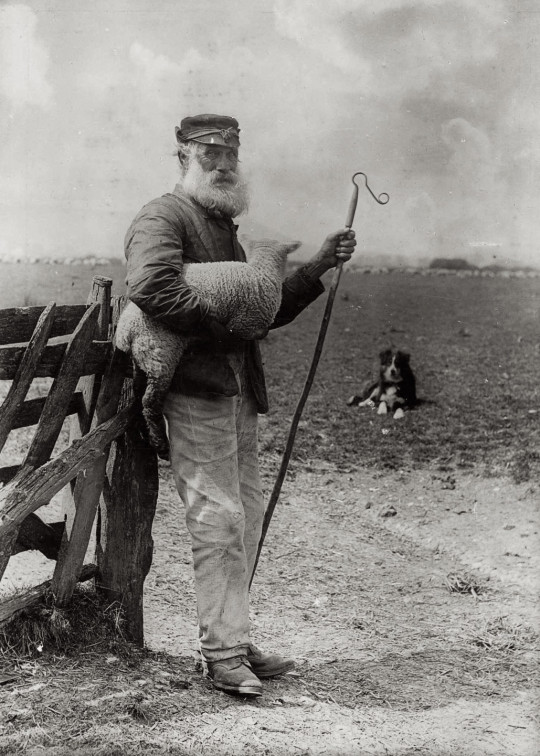
Ninely and Nine, ca. 1890 - by Joseph Gale (1830 - 1906), England
306 notes
·
View notes
Photo

Alberto Eduardo, Príncipe de Gales e futuro Eduardo VII (1890)
7 notes
·
View notes
Text

Shortening sail ahead of the gale, by Montague Dawson (1890- 1973)
105 notes
·
View notes